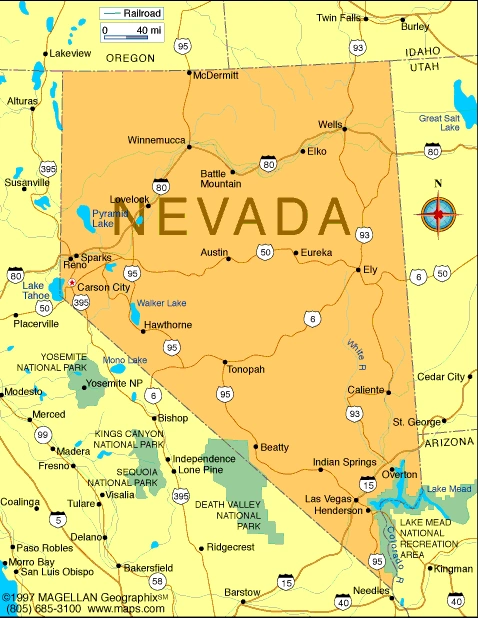Las Vegas (Nevada) - geography.
Publié le 04/05/2013

Extrait du document


«
way for the Paiute people.
In the late 1820s early Spanish explorers searching for water discovered an oasis in the region that now contains the city.
They named theoasis “Las Vegas,” Spanish for “the meadows.” These expanses of wetlands, once irrigated by artesian waters carried under pressure from the nearby mountain ranges,were a main draw to southern Nevada until the 1940s.
Las Vegas was an important stop along the Old Spanish Trail between Santa Fe, New Mexico, and southern California for much of the 19th century because the oasisenabled Spanish traders to shorten their route to Los Angeles by cutting directly across the desert.
Descriptions of the lush valley, made in 1829 and widely circulated,generated much interest.
In 1844 explorer John C.
Frémont camped in the Las Vegas Valley and described the fertile landscape in his journals.
Missionaries from theChurch of Jesus Christ of Latter-day Saints (the Mormon Church) began an intermittent settlement of the Las Vegas Valley in 1855.
This settlement served as a link toCalifornia and the Pacific Ocean.
The coming of the railroad in 1905 stabilized the Las Vegas Valley, and an era of slow growth ensued.
In the early 1900s Nevadapassed laws allowing divorce after only six months’ residency in the state.
By 1931 the requirement was reduced to six weeks, and Las Vegas gained a reputation as aneasy place to get a divorce.
Population growth accelerated in the 1930s with two innovations.
In 1931 the Bureau of Reclamation started construction of Boulder (later Hoover) Dam on the nearbyColorado River.
The Boulder was then the largest dam in the world.
Dam construction brought jobs, growth, city development, and major federal funds to Las Vegas.That same year the state of Nevada legalized gambling, facilitating the modern era of Las Vegas, which began with the construction of the Flamingo Casino by gangsterBugsy Siegel in 1945.
Other lavish casinos opened soon after, most of which were influenced or owned by criminals.
Eighty-three percent of Nevada’s land is owned by the federal government, and federal funds have significantly affected the development of southern Nevada.
The LasVegas Aerial Gunnery School began the militarization of Las Vegas.
In addition, the government required vast quantities of magnesium, a strategic metal used by themilitary, for its efforts in World War II (1939-1945).
In an attempt to keep those involved in organized crime out of Nevada casinos, in 1967 the Nevada legislaturepassed a law that allowed publicly held corporations to own casinos in the state.
Hotel and motel construction boomed after the war, with showy new casinos being built.
A trend began toward huge resorts and family-oriented theme parks.
Las Vegasnow has several huge hotels, including the MGM Grand Hotel and Theme Park, which opened in 1993 as the largest hotel in the world.
These hotels and resorts play avital role in attracting more than 29 million guests to the city each year.
Contributed By:Christopher H.
ExlinePaul F.
StarrsMicrosoft ® Encarta ® 2009. © 1993-2008 Microsoft Corporation.
All rights reserved..
»
↓↓↓ APERÇU DU DOCUMENT ↓↓↓
Liens utiles
- Las Vegas (Nevada) - geography.
- Nevada - geography.
- Sierra Nevada - geography.
- Sierra Nevada - geography.
- Purviance Edna, 1894-1958, née à Reno (Nevada), actrice américaine.






